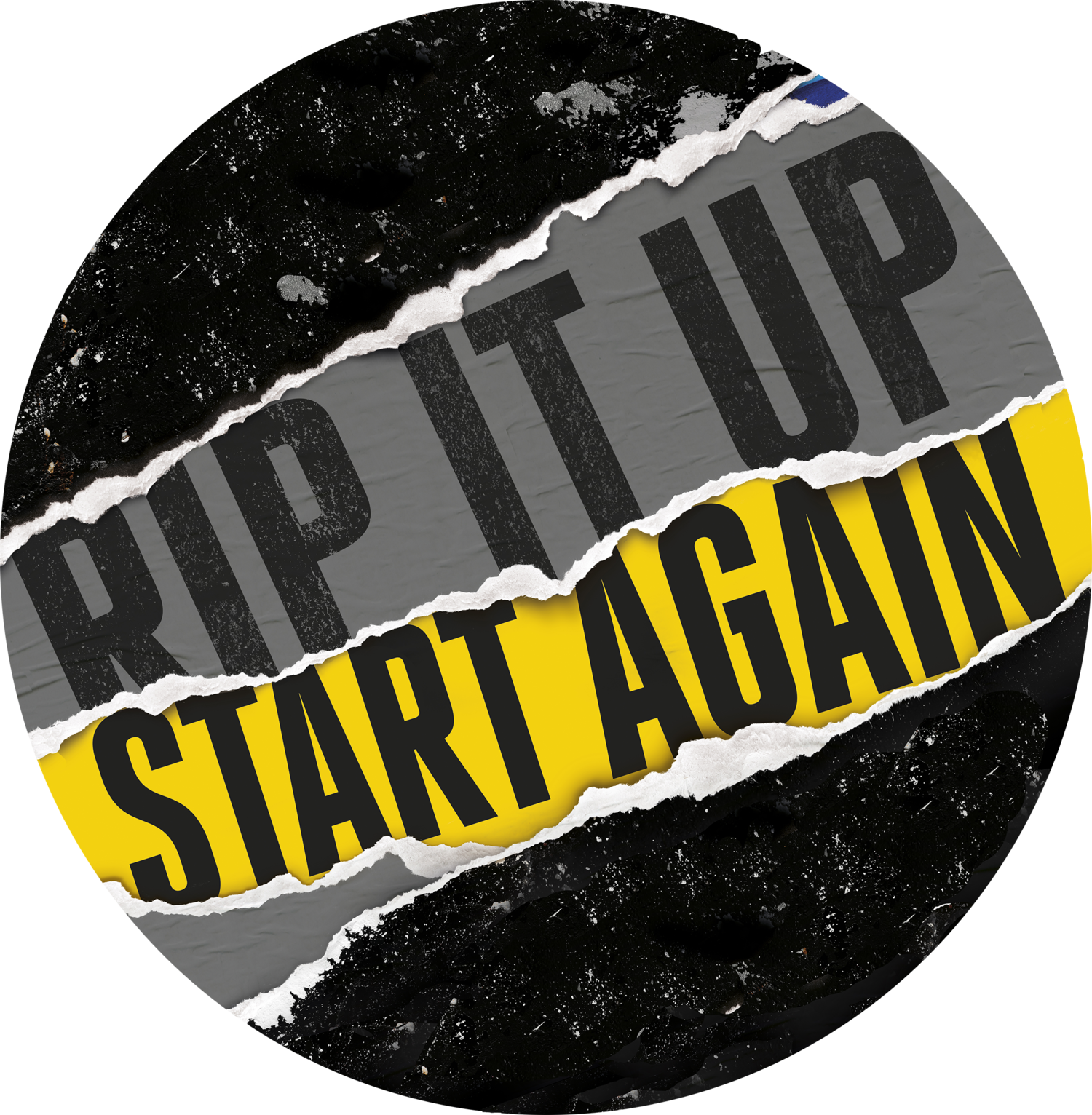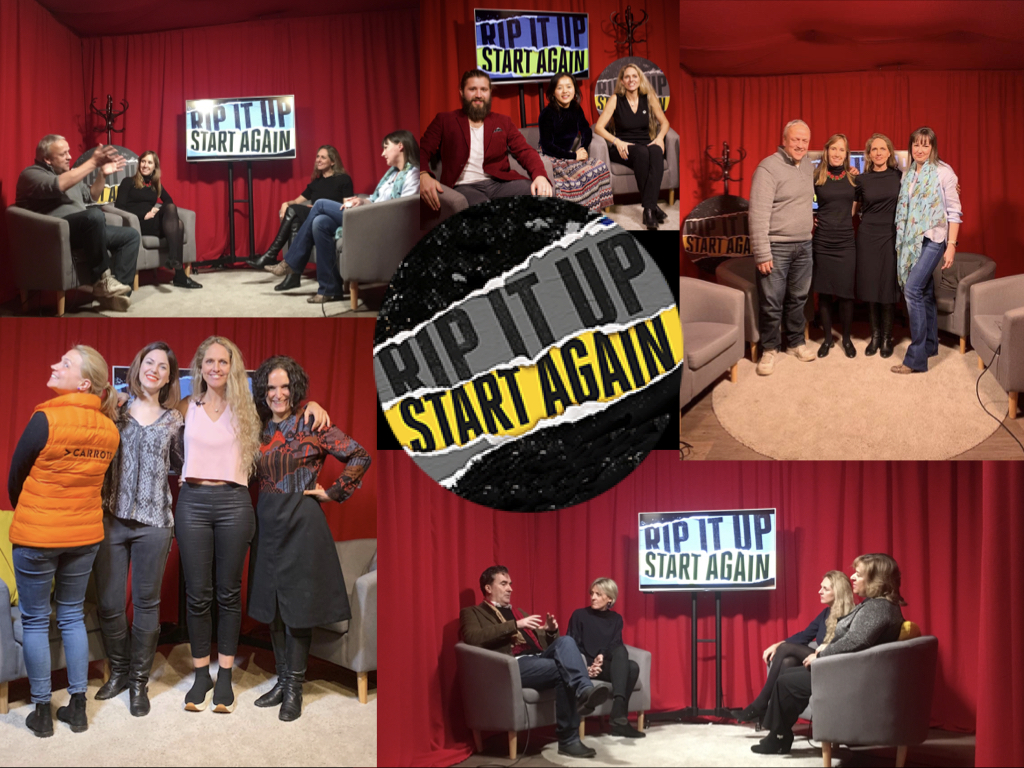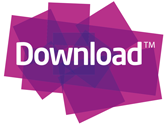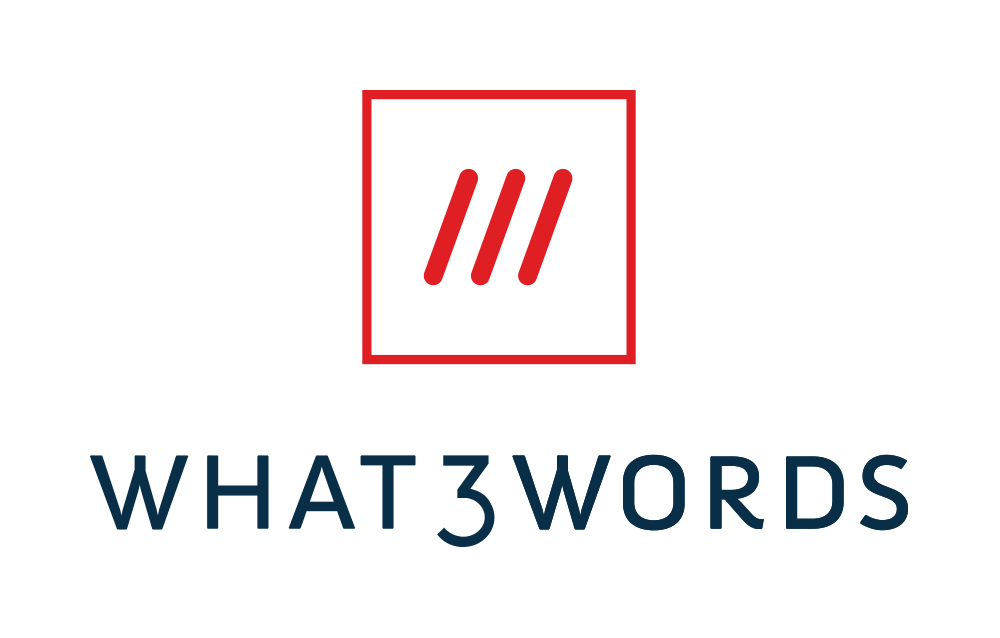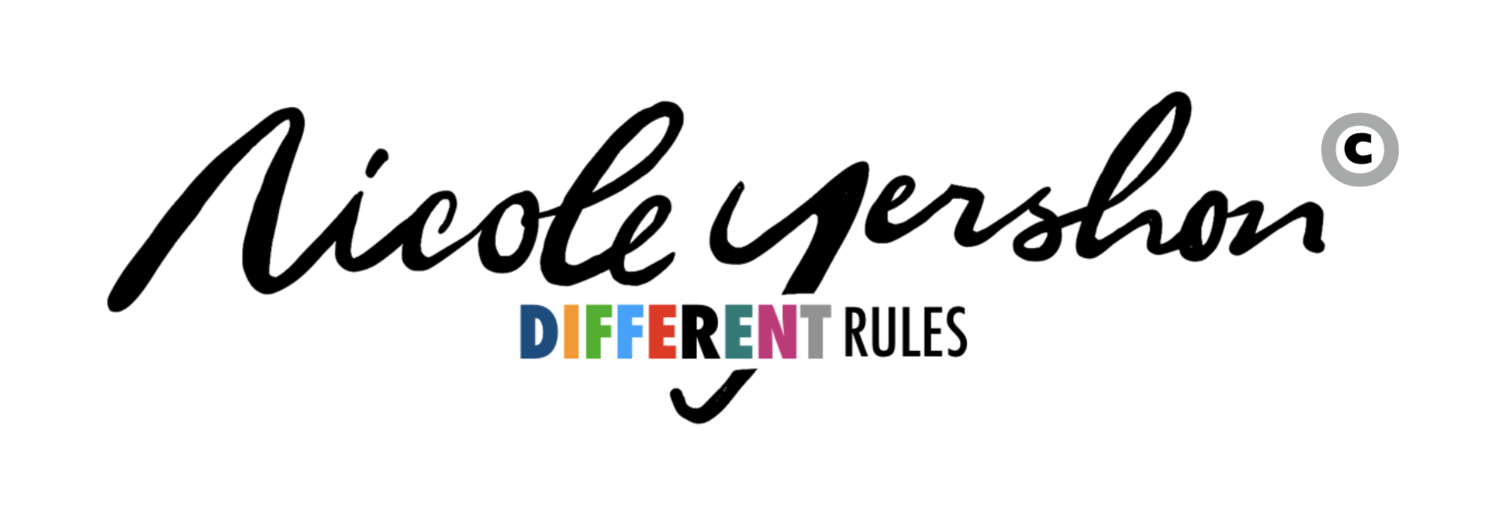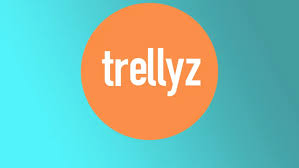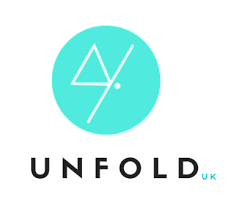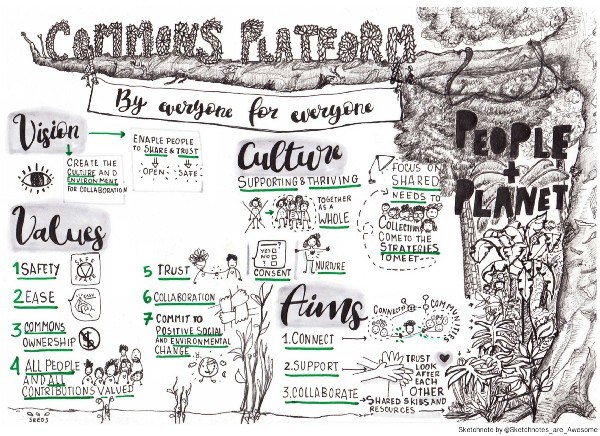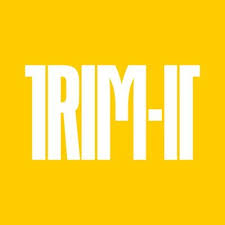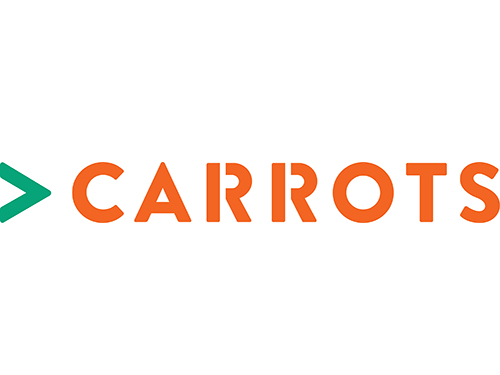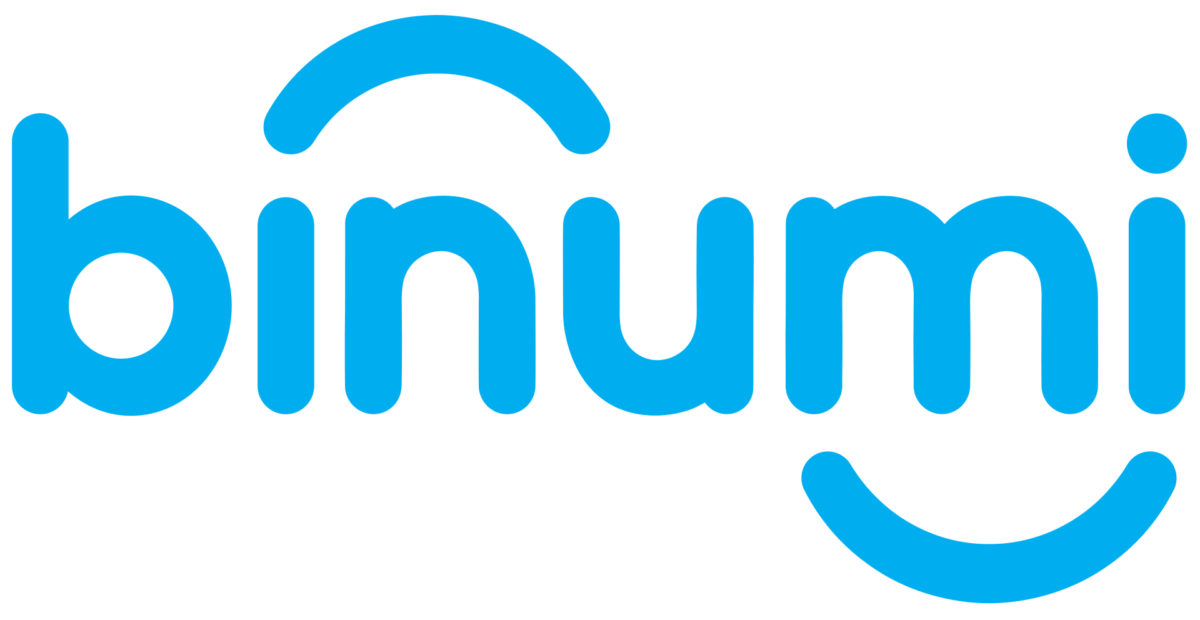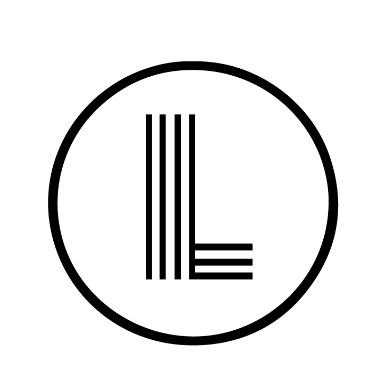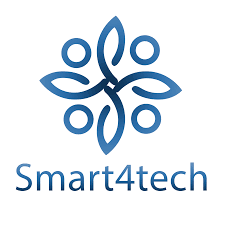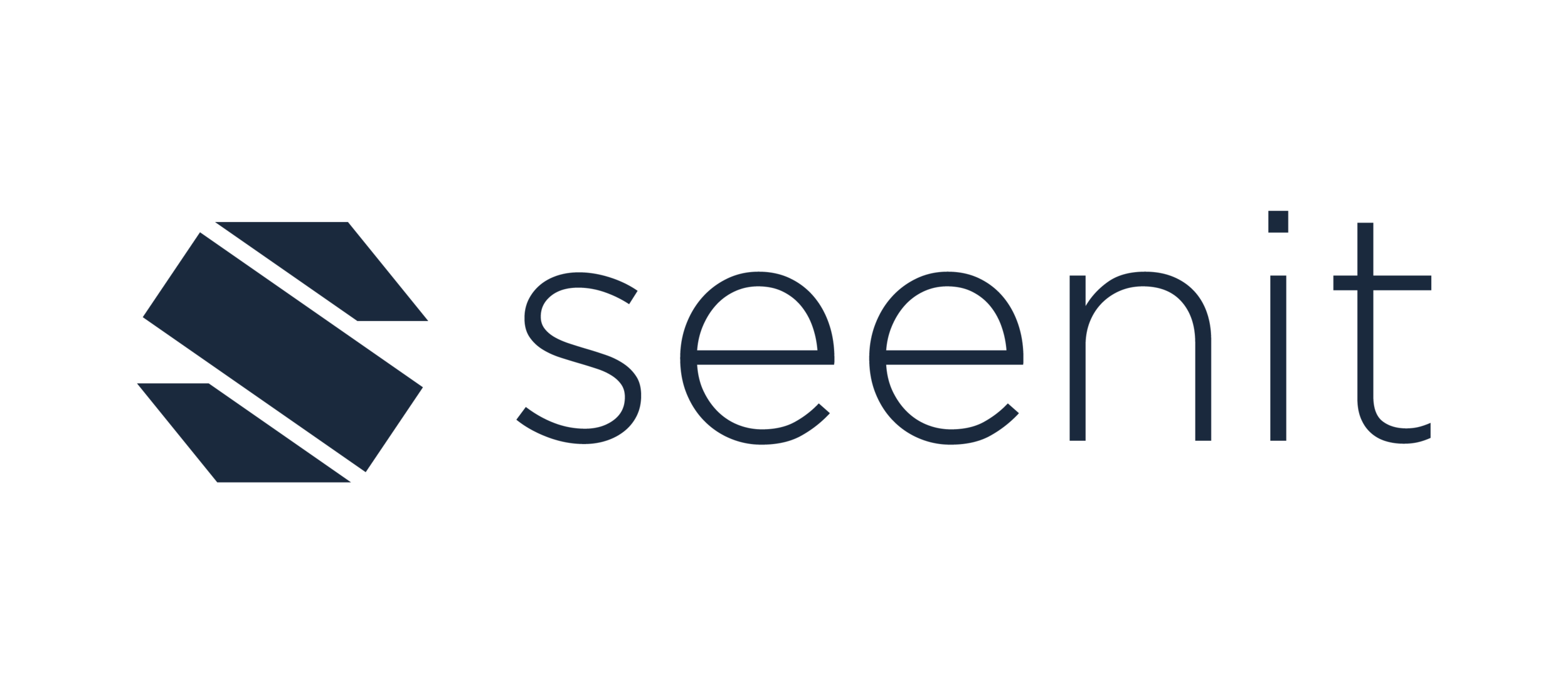Round 4: Saberr | Novastone | TRIM-IT
/Rip It Up have partnered with Disruptive.live to bring you live pitches from some of the most exciting startups right now. Hosted by Lulu Laidlaw-Smith, this televised event includes a series of five-minute overview and backstory from entrepreneurs followed by an interactive Q&A. At the end of the episode, users get to vote for which startup they would invest in. This crowdsourcing approach gives a unique insight into what consumers want – and which startups could be the next unicorn. Winners are announced every quarter!
SPEAKER #1 Alistair Shepherd | Saberr
Saberr is a tech company setting out to build better teams. Their vision is simple: what would the world look like if every team performed at the top of their game? Imagine the problems we could solve. Alistair wants to place a digital team coach in the hands of every team and begin this change. As a qualified aerospace engineer, his background is not the usual route into HR. But there is one thing that both of these industries have in common. Engineers look at systems to figure out how they work and then understand the system well enough to improve it, and there is no more interesting system than human systems. When we look at where performance comes from, it’s not the result of a lone genius. The greatest achievements – the ones that make history – come from individual contributions, but they are overall a team effort. Saberr was born from asking if it was possible to ‘design’ a successful team. Right now, big organisations are throwing out their performance management systems. They are good at measuring performance, but they are not necessarily effective at improving results. Part of the problem is a ‘top-down’ approach to leadership. For instance, the US Army used to be hierarchical, and orders came from the top. When the orders were actioned, the feedback would return from the bottom and travel back up to the decision makers. This is a slow approach, and it’s not agile. After being outmanoeuvred by opponents, the US Army changed this approach and constructed a team of teams, empowering each one to make decisions and pass them up the chain. The same is true of companies. Saberr’s software enables large organisations to construct a team of teams, and coach them to become more disruptive. Find out more at www.saberr.com.
SPEAKER #2 Douglas Orr | Novastone
Douglas formed Novastone based on his 20 years of experience working with technology. There has been a noticeable shift away from correspondence over this period. Devices like fax machines – once found in every office – are now unrecognisable to the next generation. Sending mail in the post, while still a valid mode of correspondence, is slow and impractical for entering into dialogue. The emphasis has changed from correspondence to conversation. Novastone offers a white label solution for banks, medical services and other organisations. The aim is to help them move away from correspondence through email and paper and guide them towards conversations – whether it’s between members of staff or communicating with leaders in the business. In essence, Novastone facilitates the way people already want to work, while wrapping the tools in a framework of security and compliance. Most of their clients are operating in regulated industries, so these businesses need to both capture and secure conversations. Novastone integrates with existing legacy software and possible future software, leading to a transformation in engagement and a massive decrease in costs. The fastest growing market right now is Asia. In Asian markets, the shift from email to instant messenger is almost complete, with most people using WeChat and WhatsApp to do business. Novastone is streamlining these conversations, making them secure and compliant. Find out more at www.novastonemedia.com.
SPEAKER #3 Darren Tenkorang | TRIM-IT
Darren has launched the first app-powered mobile barbershop in the UK. The idea is simple: when you need a haircut, book a slot through the app, and a luxury barbershop van will turn up allowing users to be in the chair without wasting time in queues. The idea came from a ‘road bump’ in Darren’s personal life. His relationship was going through a rough patch and his girlfriend asked him to put more effort into the relationship. He agreed to make up by taking her on a date the following Tuesday. When the day rolled around, he was completely unprepared; he didn’t know what he was going to wear, he hadn’t booked a table, he didn’t have any flowers – and, most importantly, he hadn’t had a ‘trim’. He called his barber for a last-minute appointment and was told that they could squeeze him in. But when he arrived at the barbershop, there was a long queue and he ended up waiting for almost three hours. Long story short, he was late for his own date. After reflecting on why he was now single, Darren came to the only logical conclusion: It was his barber’s fault. The barbering industry is broken, and the process of booking is outdated. Unlike past generations, who would spend an entire morning at the barbershop and enjoy a beer on the side, these days people want a fast and efficient service. TRIM-IT puts the barbershop experience into the back of a van, allows people to book through an app, then turns up at their house. And you can still enjoy a beer (without being late for your date). Find out more at www.trimitapp.co.uk.
Q&A HIGHLIGHTS
On problems solved...
Darren Tenkorang: “The larger problem I suppose for us is time. I can go to the barber on a Friday or a Saturday, and a lot of guys have the same experience, and you end up spending hours in the barbershop. My father’s generation, they were used to going to the barbershop, watching the football game, drinking a pint of Guinness, but that’s just not me, not our generation anyway where everything is so fast-paced. As I said, I don’t have time to wait three hours in the barbershop. Our main selling point, our biggest value proposition is the fact that we’re able to give the user back time, and we work around the user’s time schedule, so we bring a barbershop to the user.”
Douglas Orr: “I feel that this secular shift away from the world of correspondence to that which is conversationally-centred, has a long way to run. In our personal lives, we’ve seen how BBM, 10 years ago, let’s say, has morphed into WhatsApp, and other similar platforms, and it’s conquered our personal spaces. But in the business spaces, this is still very much a work in motion. We have some great products out there, like Slack, which are for the intensive collaboration of a team of people. I don’t think there’s much better than Slack, and hence a lot of companies have copied that model, but Novastone is somewhere in-between. We recognise that the thing that was good about email was the thread, and so Novastone is a thread-based conversational platform because you don’t need a chat room for every piece of engagement between two people.”
Alistair Shepherd: “The big problem that we see in enterprise space at the moment, from an HR perspective is performance management. Performance management has historically been, you know, an annual review by your manager where you get put on a one to five scale. If you’re a five, you might get a promotion, a pay rise. If you’re a one, you might get fired. If you’re a two or a three or a four, you get nothing. You get no incentive, there’s no motivation to try harder, you just sort of continue for another year, and you also have no concrete way to improve your score. So, if you’re my manager and you act like you don’t like me, there’s not much I can do to change how you’re grading my performance within work. From an employee’s perspective, there’s this extremely alienating process to go through; from a company’s perspective, it doesn’t do what performance management should do which is improve. It doesn’t actually change anything within the organisation about how the company is performing. Performance management is essentially three things: it is a way to set compensation (so how you set salaries within the organisation); it’s a way to track progress against goals that you set; and thirdly, it’s a way to have coaching conversations or improve the performance of your employees. Old-school performance management is a way to measure employees, not a way to improve teams or the performance in the organization. The piece of the puzzle that we want to solve is really how do you improve performance, not just measure it?”
On trust...
Darren Tenkorang: “The really important thing for me is, when we actually decided to bring the barber to the user, the logical process would be to just bring the barber to the user’s house. But what we wanted to do was actually keep that barbershop experience and effectively allow a user to come out of their house and the barbershop would be there. We found that our customer base is around 18-30. A 24-year-old, for example, like myself; I’m still living with my parents and it’s a little but awkward having to tell your mum or your dad that the barber’s coming into the kitchen and there might be hair around. We wanted to just allow the user just to feel comfortable in a space built for them, outside their house. Then there’s another side to trust in the barber industry. Literally yesterday, we were trying to win some business from a blogger, and one of my colleagues was like, ‘How loyal are you to your barber?’ And he was like, ‘I’m going to pay for his children to go to university.’ That type of loyalty. He’s probably taking the piss, but it just goes to show, like, you can’t cheat on your barber. So we need to show that we are able to create an amazing haircut, but not only that – we also need the whole process to be slick and cool.”
Douglas Orr: “It’s back to where do people do transactions? They do it in places where they feel it’s secure, it’s confidential, that the friction to actually execute the transaction is low, and these are all are all the things which we aspire to at Novastone, is to facilitate that space. These companies that we work with are offering services of value; law firms, banks, medical firms. Hence, there is a requirement for trust and security. We need to transact in a relatively low-friction way and we need to meet the requirements of our first client segments: the banks. It was not easy. There were a lot of people whose job was to say no to innovation at those banks. We had to understand those requirements and surpass their expectations. Having met the requirements within the financial industry, it’s easy to then take our product to other industries. Although they have similar requirements, they are not at quite the same level of security and compliance as banking.”
Alistair Shepherd: “One of the things we are doing with our product is making sure that we leverage the intelligence of our users. One of the biggest lessons was that when you’re trying to get people to make a decision together, there is no point the AI or the software making a judgement about how good that decision is. The answer is not as useful as the discussion. For example, if you and I are trying to make a decision, we do not want a computer judging us saying, ‘Oh, well, you could have made it a little bit better, we’re going to knock you down a performance grade.’ What we really want is an AI to say, ‘Alistair, you did something different in a previous team, is that now relevant to what you’re doing here?’ And then I can bring that to our conversations. I actually feel empowered as an employee rather than yet another Big Brother system judging me, judging my performance, judging us as a team. I think trust plays an important role in what we do in two ways: One is, users have got to trust the system that they’re using in order for them to get any benefit out of it. One of the big sort of trends that we see at the moment is a backlash against systems that are in invading our privacy or at least we tend not to trust stuff if we think it’s going to be reporting to central management what I’m up to.”
On validation...
Darren Tenkorang: “We built a little bit of a waiting list before we launched it, so validation came for us simply through getting customers. And we said to the world, ‘Look, we’re out there, and we’ll come to you.’ Luckily for us, we’ve got like a few celebrities that started using it. In fact, one of our big celebs that started using us, that led to a lot of traction, was Charlie Sloth. He jumped in a van and got a haircut, put it on his socials and whatnot, and we’ve got a lot of traction as a result of that. And so for the last four months, we were fully booked out every single day. You couldn’t book an appointment with us. We were in our validation stage. Once we were comfortable with that, we went to investors and said, ‘We’ve got a van, it’s got a barbershop in the back of it, we’ve been fully booked out’, and that was our validation, that was our traction.”
Douglas Orr: “One of our co-founders had just spent 20 years in wealth management spaces. I brought the concept to him and he said, ‘You’re absolutely right, where do I invest?’ And that was the beginning, that was about just over four years ago. It’s been a long gestation period, because you can’t release a product like ours half-baked, it has to be fully secure. So we got our first client, which is one of the world’s biggest banks. We hope to be able to speak about it publicly in the next couple of weeks, but it started in one part of the bank and then it’s moved to another part of the bank, and to another part of the bank, and we’re just so excited being on that journey. So that’s how validation came. What’s been really exciting is to see how we’re now being pulled into other spaces where, again, the framework is conversations of value, probably a regulated industry, security and confidentiality are essential.”
Alistair Shepherd: “The real validation came when we started going out and profiling teams within organizations. We were revealing inadequacies in these teams all over the place and the big demand for them was, ‘Help us fix the teams. Help us improve the performance. Don’t just judge whether a team is good or bad, help us fix it.’ Saberr’s got customers in 49 different countries, we work with some of the world’s biggest banks, we work with telecoms companies, we work with the NHS. In fact, the NHS enjoyed it so much, they’ve now started using it at two other parts of the NHS.”
On scaling up…
Darren Tenkorang: “It’s quite simple. As I said: simple guy, simple idea. We put more vans on the road, more mobile barber shops, and we make sure our recruitment process is really tight, so making sure we’ve got the best barbers in the best areas for our clientele. Eventually we want to be able to actually franchise the model as well so that will help us rapidly grow, because our goal is to get from one van to 1,000 in five years.”
Douglas Orr: “Our installations tend to be large and intensive. We will not scale on our own, we will scale with partners. We have some relationships now with large consultancy firms, the one which we’re doing a lot of work with right now is KPMG who have put us on their Secure Teach 100 List of global security companies that they work with. They will help us get the installations and the configurations and the project work done in a way that we could not ever scale up on our own resources. Our solution is complimentary to their services, complimentary to the relationships they’ve already established with many installations through the years, so we can go back to many of those installations that they have done and say, ‘That was a great piece of software that we sold you six years ago, but it was all based around email and portals and paper. What if we added a conversational IM framework to that set of processes?’ The processes are fine, let’s just make it hot and sexy and relevant.”
Alistair Shepherd: “We’re lucky in the fact that performance management is being disruptive and we’re really right at the heart of that. Performance is not about measuring individuals, it comes from teams. But how we scale? Well, there’s two ways. One is the enterprise, similar to Douglas — land and expand. You get a pilot, it’s going well, they see the results of that, and then you grow it within the enterprise. Then there are other ways – channels are really important to us. We’ve got two sort of big channels; the first is human coaches. Although we’re trying to build a digital team coach, I don’t see human coaches as a threat. I see them as an opportunity, because they go in say, ‘I’ll coach a senior team’. The senior team say, ‘This has been a fantastic experience, our performance as a result of coaching is so much better. We can’t afford to provide coaching for all 10,000 employees. How do we scale what you’ve just given us?’ So human coaches are saying, ‘I work with this great company, Saberr’s got a digital team coach, use that.’ There are some problems that require a human touch, and digital team coaching or at least Saberr’s coach bot, is not in a position to solve every problem.”
On change...
Darren Tenkorang: “One of the things we’re investing in is tech. We’ve got some bits of functionality that we want to add, and simple things, from getting a barber to point A to point B without us having to actually do anything. We’ve already built that, but we want to make sure we make it more efficient. And we’re also investing in people, so the barber, the workforce. And most importantly for us is investing in marketing and making sure everyone knows about us and it’s not just a small group of people in South London.”
Douglas Orr: “I might have to invest in Saberr because we’re growing, and you know, I’ve been here before, it’s my third start-up. It’s at that time where, as you grow, it’s very easy for organisations to splinter into silos which for whatever reason don’t work effectively with each other. So, aside from the usual scaling of adding more people, both sales and engineering and so on, it’s about putting in place the processes to try and avoid this siloing effect as you add people.”
Alistair Shepherd: “We’re very focused on teams at the moment, helping teams perform at the top of their game. There’s two places that we want to go after. One is helping individuals, particularly managers, be the very best version of themselves at work, so coaching managers about how to be better managers, and also employees about how to perhaps upwardly manage. And secondly, we want to start helping the organisation. We’re gathering really interesting patterns about how teams are performing, what context leads to what type of team problems. That’s extremely useful when applied at scale, so providing a whole suite of organizational tools to say this is how you can get more productivity out of your workforce, not just this team or this manager.”
